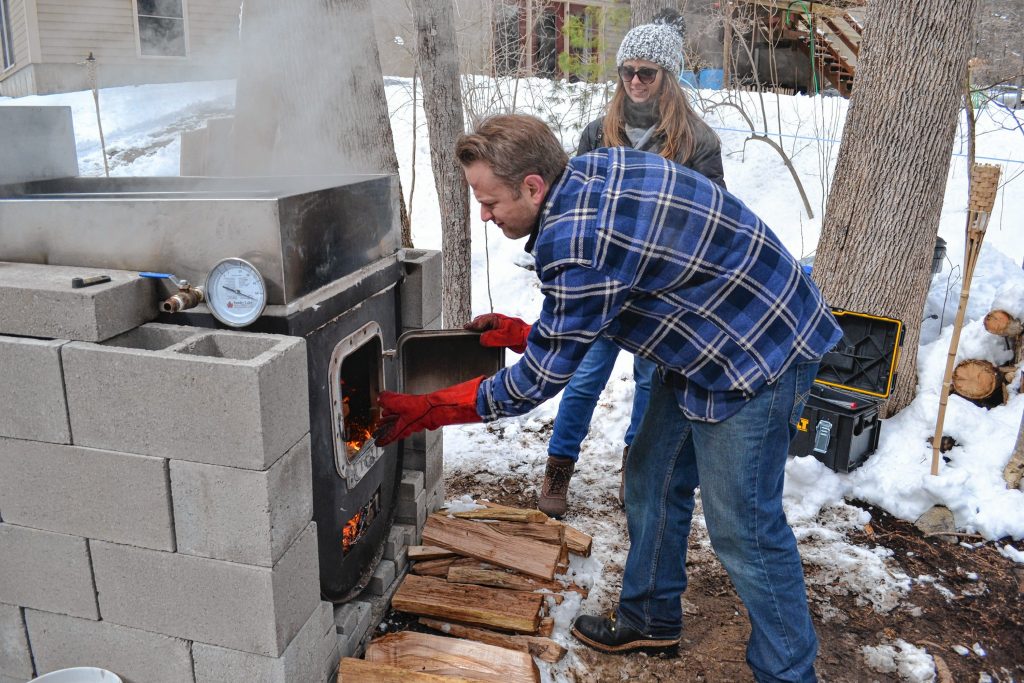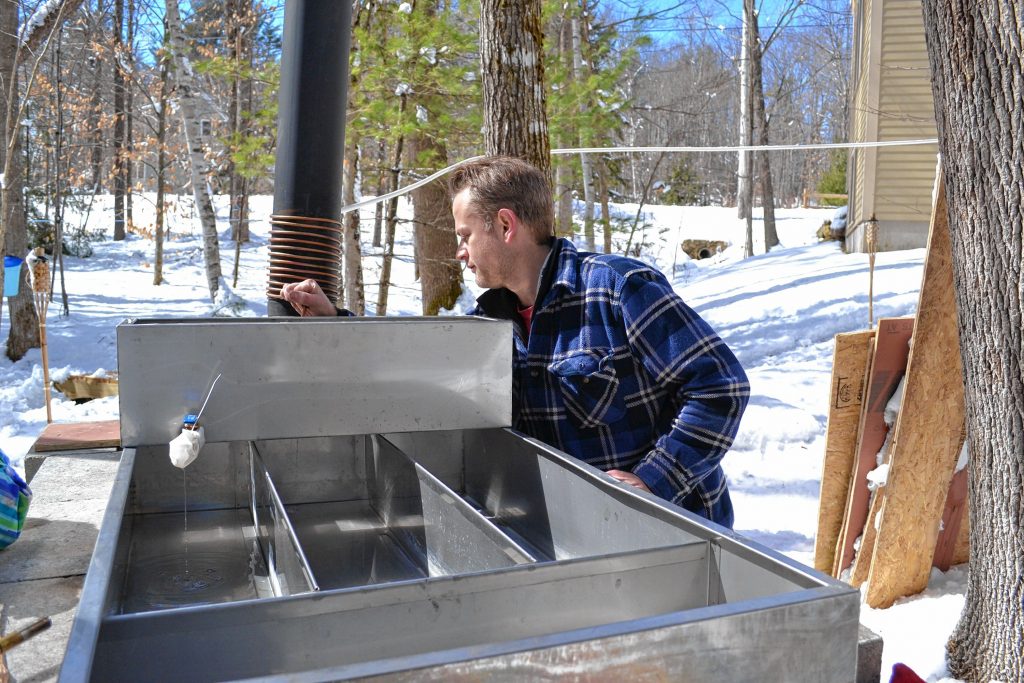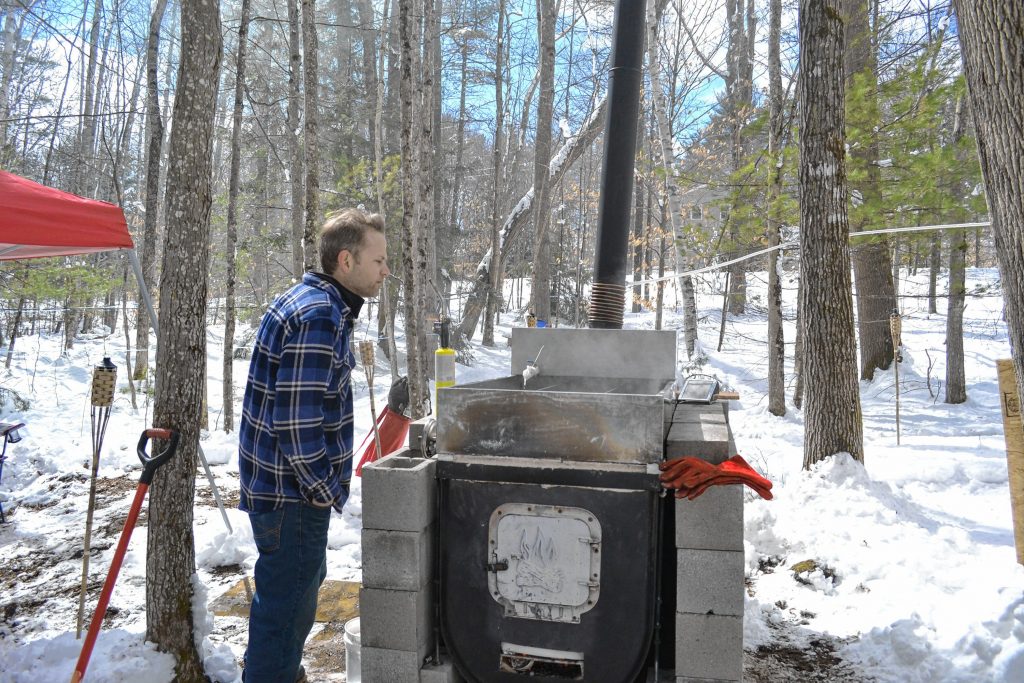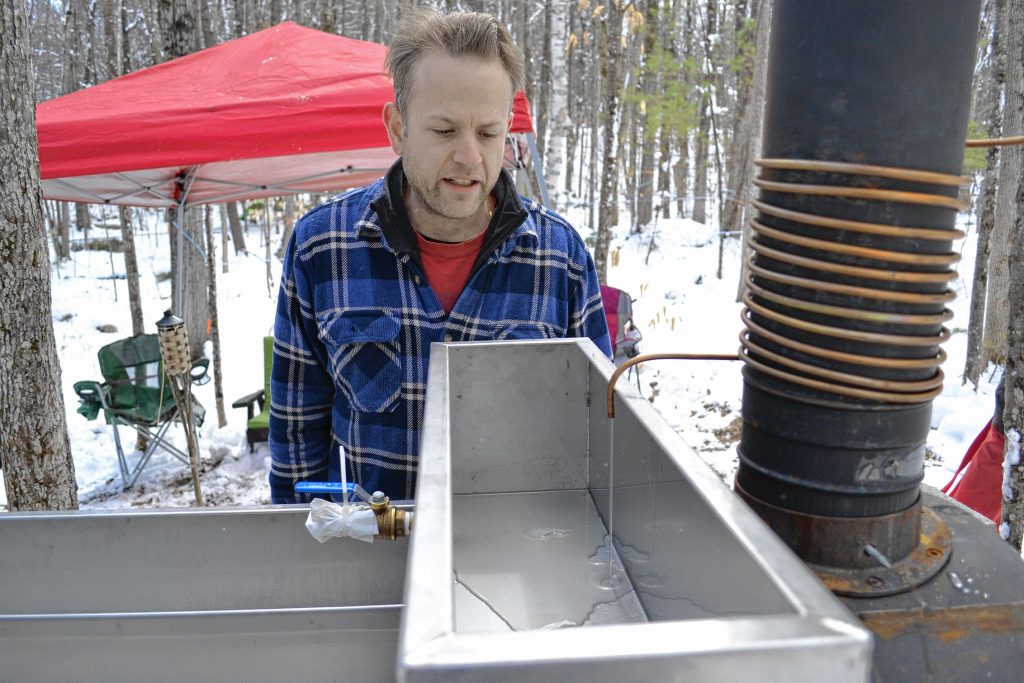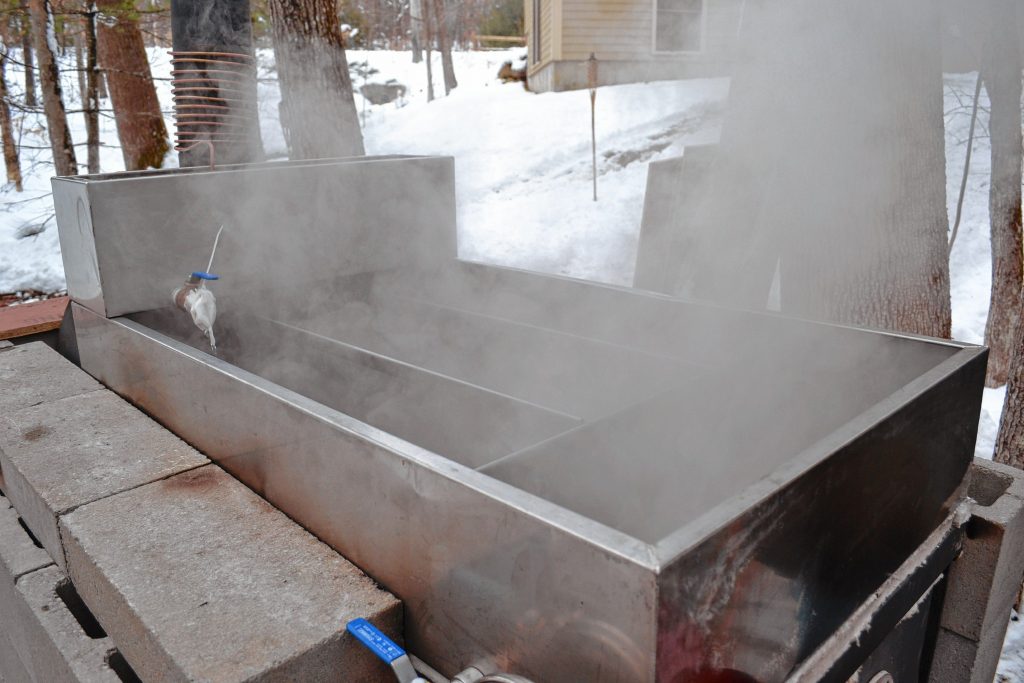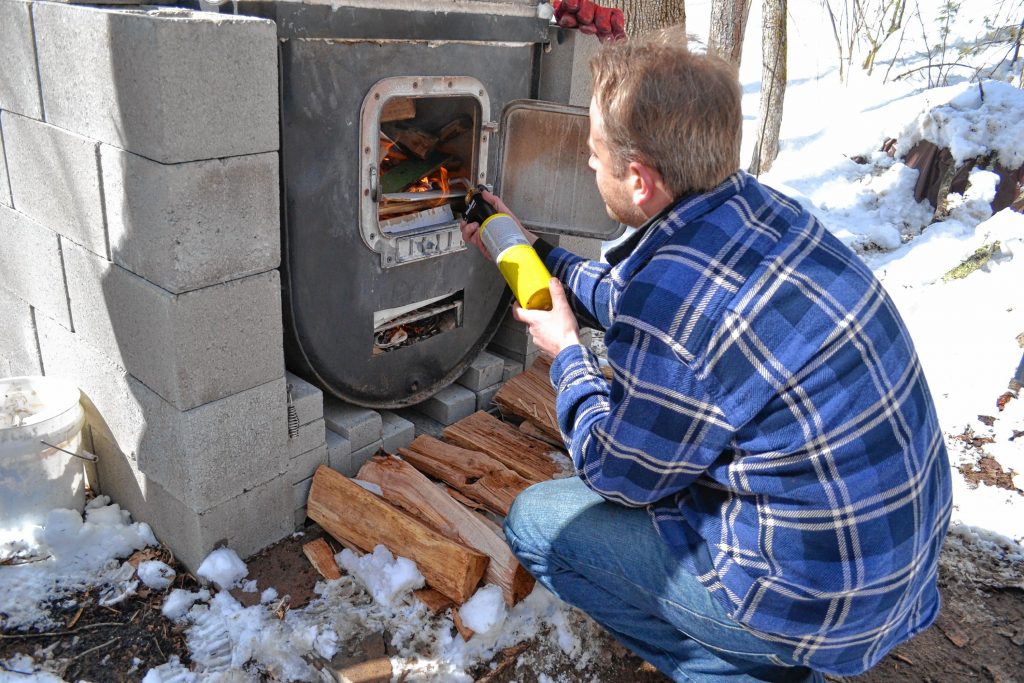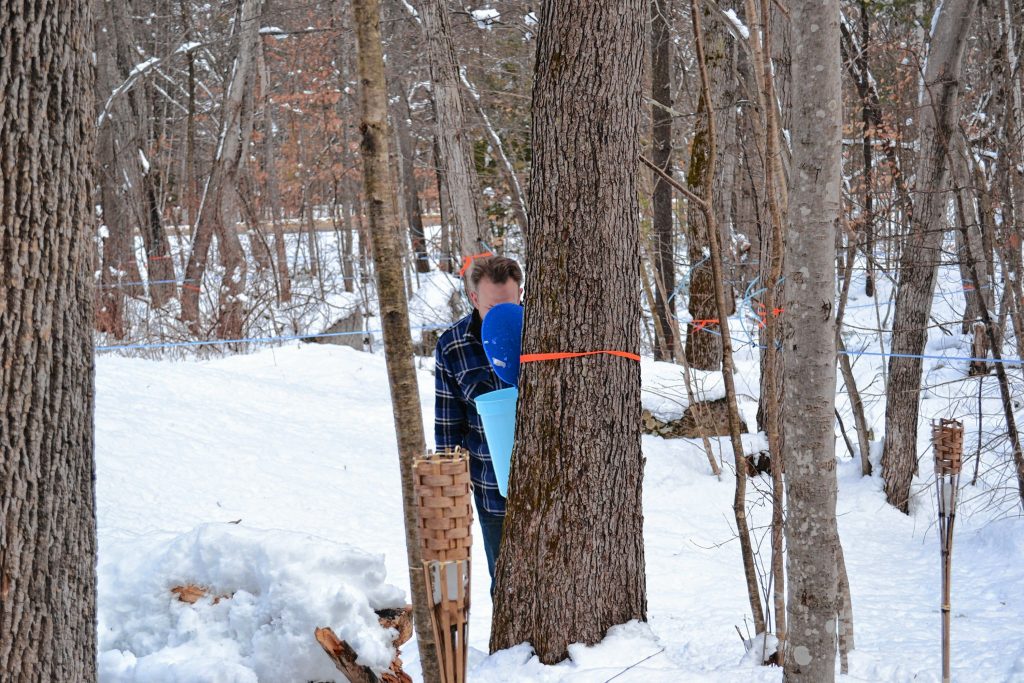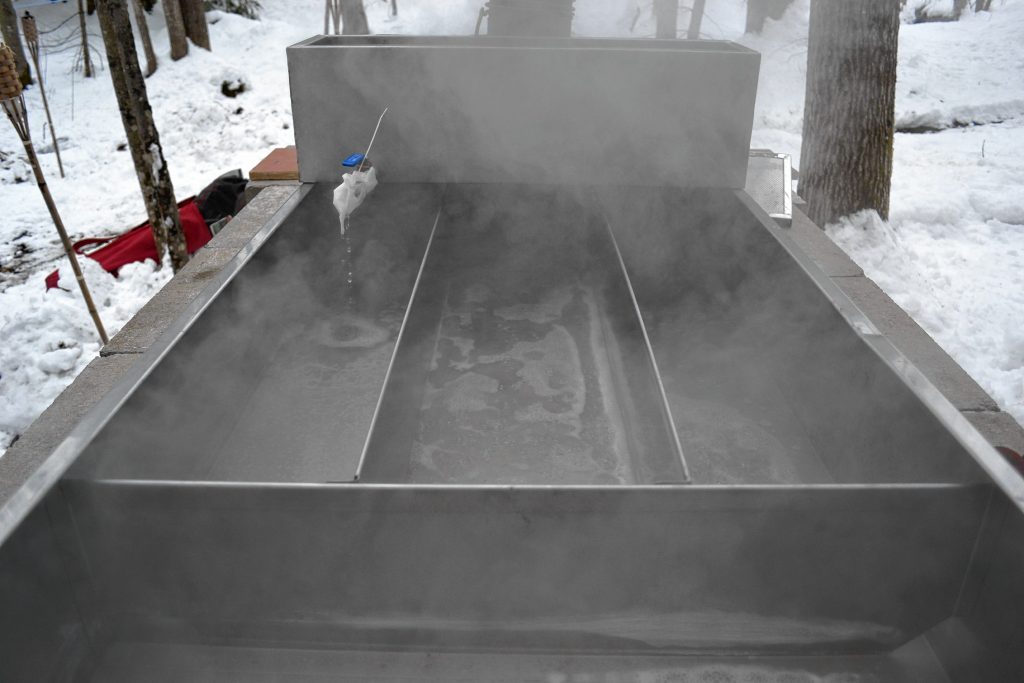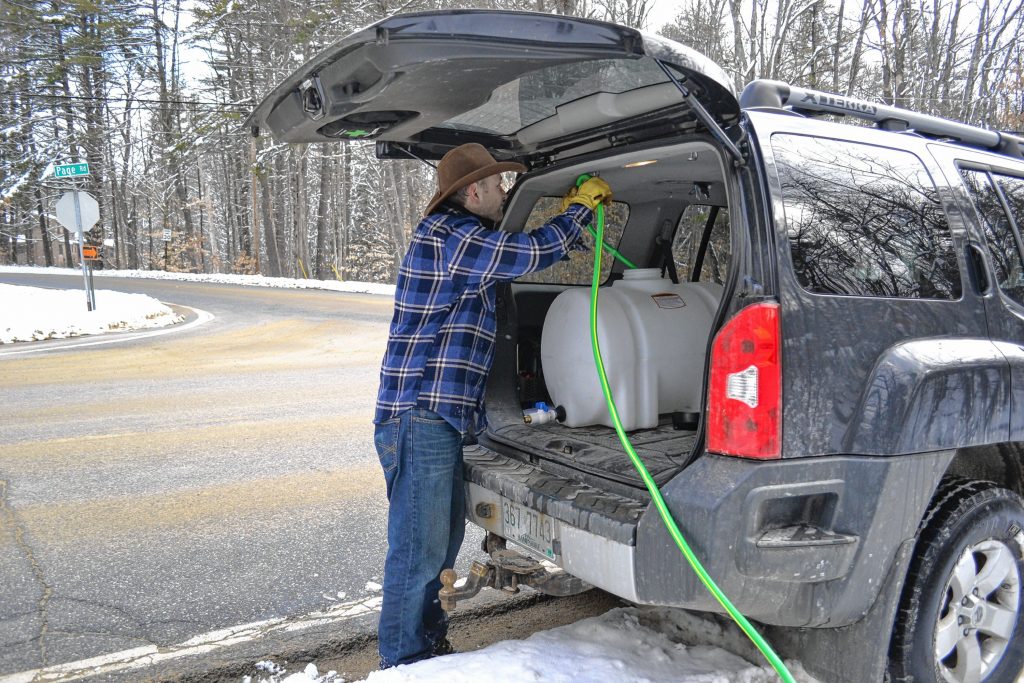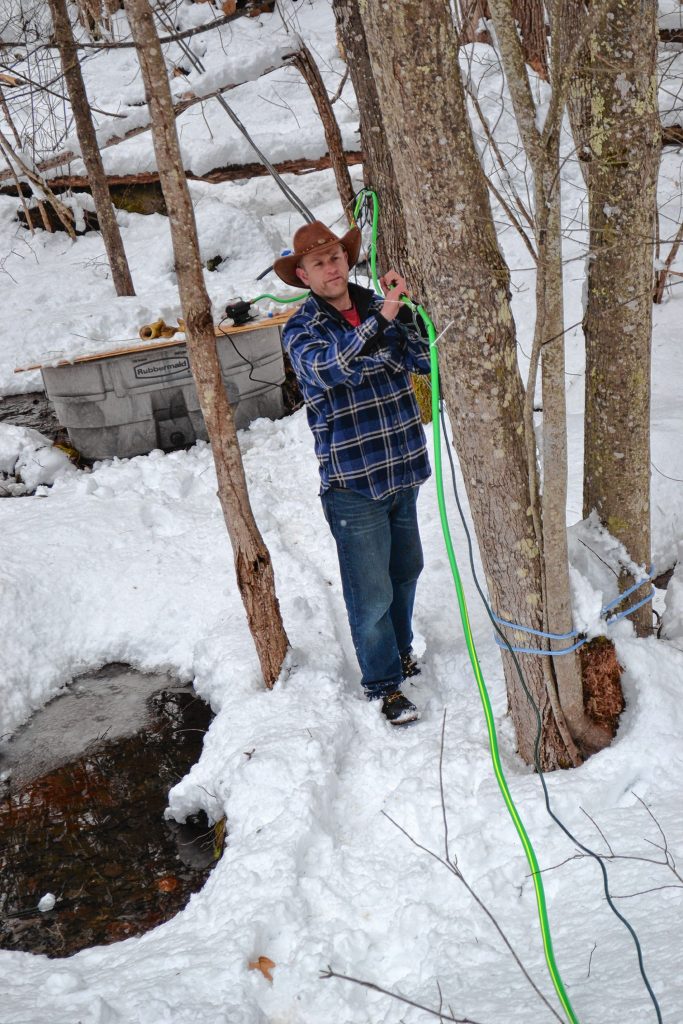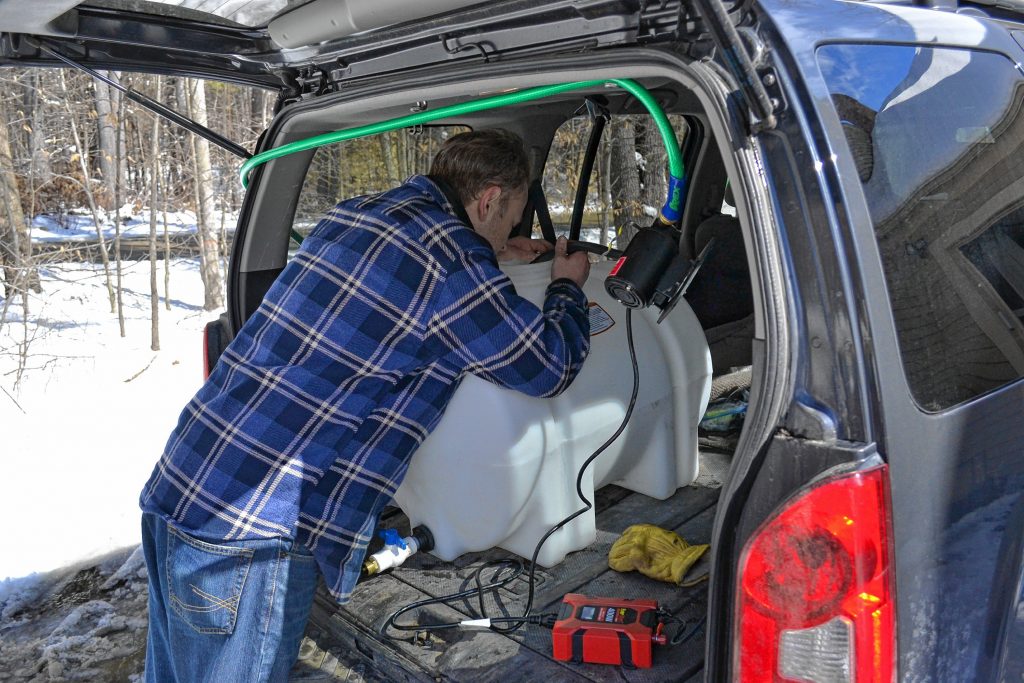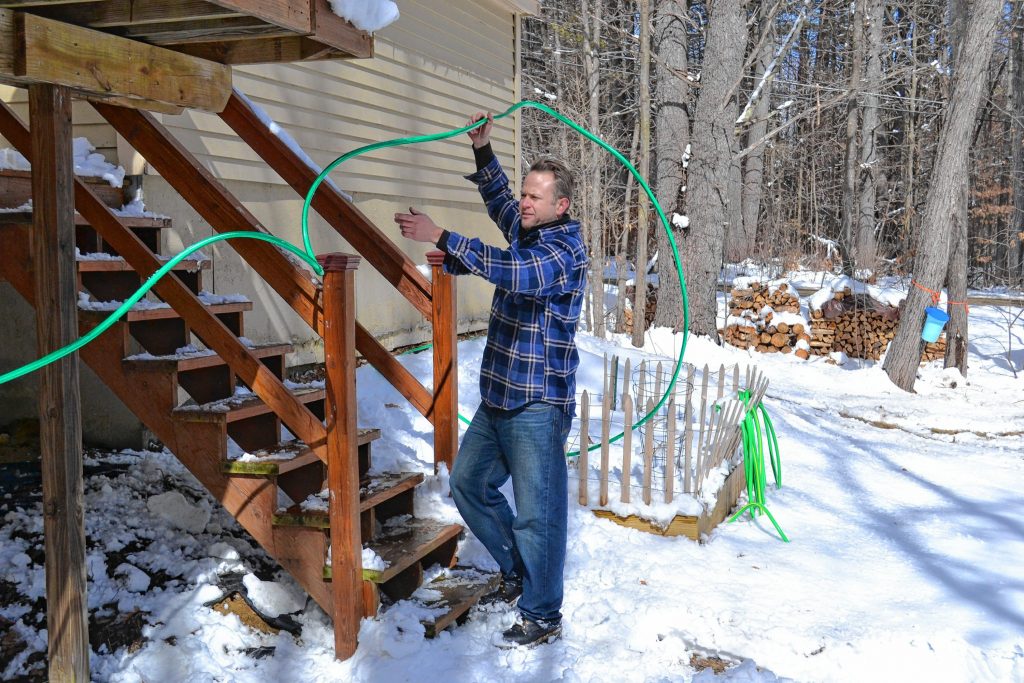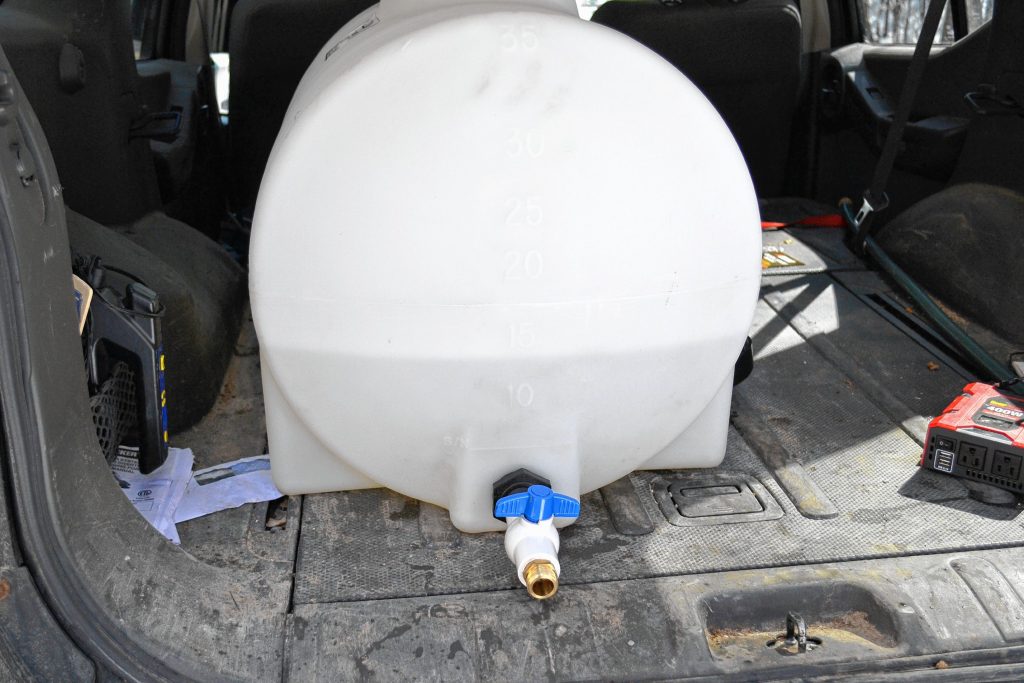When Andrew Mattiace decided he was going to try making maple syrup this spring, he put in his research. Between YouTube, books and talking to some seasoned maple producers, he got a good idea of what it would take to get his small-scale operation, Beaver Brook Maple, off the ground.
He tagged all the maple trees on his Bow property last fall, designed and built an outdoor evaporator over the winter and purchased/ collected all the materials he would need to get ready for the fast-paced sugaring season.
By mid-February, Mattiace had put in 80 taps on 60 trees with almost all of them connected to tubing that are gravity fed into a large holding tank. He had originally thought about doing strictly buckets, but quickly realized that would be quite the labor of love. But he still has four taps that feed solely into buckets – purely for the experience.
“The trees looked like they had never been tapped,” Mattiace said. “And I have more available, could probably get another 20.”
He did a trial run using water to check for any deficiencies or problems that may arise while using his homemade evaporator. You see, he found an old oil tank online for free that he then converted (with the help of a friend who could weld) into his fire pit under the evaporator pan. The pan itself was designed by Mattiace and put together by another friend, while the whole setup is a work in progress.
The sap is gravity fed by the tubing to a large holding tank at the bottom of his property. He then uses a pump system to extract the sap to a smaller tank that he keeps in the back of his vehicle.
From there, the sap is driven back to his driveway and then pumped once again to a large barrel underneath his deck. And yet another pump system is used to get the sap from the barrel to the holding tank from his SUV that has been moved to his elevated deck. The sap then flows down to the evaporator for boiling.
“The heart of the whole operation is the evaporator,” Mattiace said. “And that was really the fun part of the whole thing, designing the process, down to the evaporator.”
He has used strategically paced garden hoses to help with transferring, but he’s already planning on replacing those with a better tubing.
“I regret using garden hoses,” Mattiace said.
Due to weather conditions and the fact he doesn’t have a ton of taps – at least not like the big operations – Mattiace only got about 15 gallons of sap this past weekend, which if you know your maple syrup-making math, it takes upwards of 40 gallons of sap to make a single gallon of syrup.
That was his fourth boil of the season, and thus far he has only given the little bit that he’s made to family, friends and co-workers. The hope is to get more sap out of the trees so he can make more – and hopefully sell a little bit of it.
“I haven’t been able to keep up with the demand,” Mattiace said. “I was hoping to process 100 to 150 gallons of sap a weekend.”
It’s a three-pronged approach to boiling, as he starts with the evaporator and then moves the sap to a camping stove and finally his kitchen stove to finish it off. Like we said, this is backyard sugaring at its finest.
Mattiace always knew this first year would be a learn-as-he-goes approach. And he certainly has learned a lot and has ideas for the future – but he’ll get to those once the sap stops flowing.
“I’m more than happy so far. It’s been fun,” he said.

